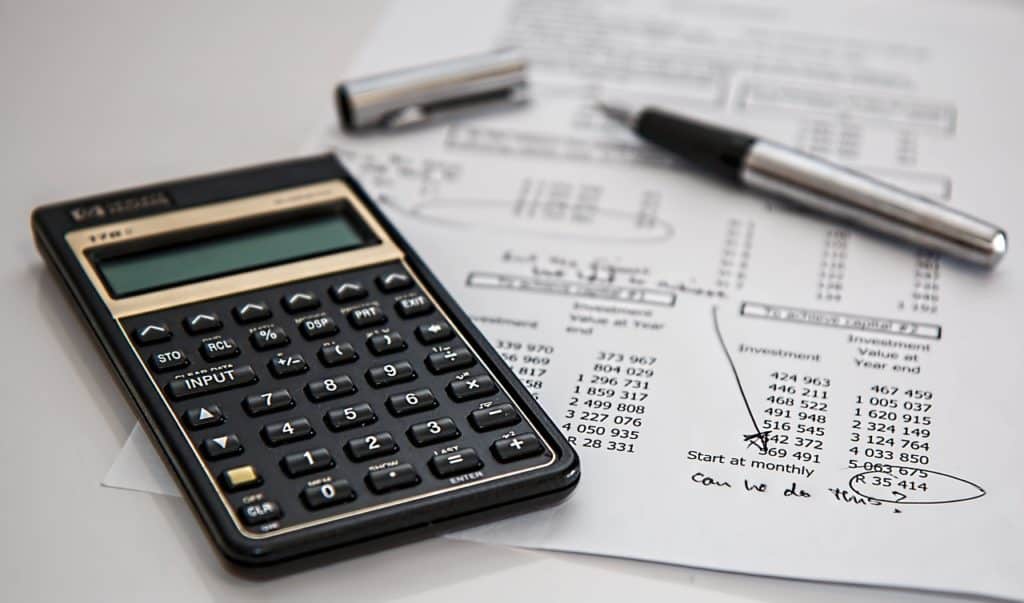Hotel revenue management often involves an analysis of many factors to create a sales strategy. Hotel RevPAR is one of these essential factors that shouldn’t be overlooked. Analysing hotel RevPAR helps to focus your sales strategy on profits instead of booking rooms. Hotel RevPAR gives an indicator of whether you are over or underspending, an overview of the pricing accuracy for all rooms, as well as if your pricing strategy is truly at maximum efficiency.
Table of Contents
RevPAR definition – What is hotel revpar?
RevPAR stands for Revenue Per Available Room and is a common KPI (key performance indicator) used to analyse performance in the hotel industry. The goal with RevPAR is to understand a hotel’s ability on average to fill the total number of rooms. A common element of hotel revenue management, RevPAR helps give an understanding of how much hotels should charge for their rooms based on their hotel occupancy rate (how many people the hotel can hold) and revenue. Analysing RevPAR is a typical part of creating a sales strategy based on its calculation, as well as other important hotels KPIs.
Furthermore, calculating these KPIs as well as using additional online marketing tactics can skyrocket your results.

How is RevPAR calculated?
There are two major ways to calculate RevPAR:
RevPAR = Room Revenue / Rooms Available
RevPAR = Average Daily Rate x Occupancy Rate
A RevPAR calculation example
Let’s take a look at an example of how this could look:
- 200 total available rooms
- $100 average daily rate
- 80% occupancy rate
- $16,000 total revenue
Average Daily Rate ($100) x Occupancy Rate (0.80) = $80
Rooms Revenue ($16,000) / Rooms Available (200) = $80
Therefore, the Revenue Per Available Room is $80.
What is RevPAR index?
Another section of RevPAR that is important to consider analysing is the RevPAR index. The RevPAR index basically involves a comparison of your RevPAR with other hotels that have similar numerical elements (see calculation above), making them direct competitors. The RevPAR index points out three important factors to compare with these competitors:
- How well your sales function or could be improved
- Your variance level (if there are gaps that could be closed to increase profits)
- How your hotel is positioned in the market (how much your market share is)
If you’d like to compare RevPAR per region, check out this Statista infographic. Please note, however, that RevPAR index is more accurate when comparing competitors based on specific financial factors comparable to your hotel.
How is RevPAR index calculated?
The formula looks like this:
(Subject hotel RevPAR / Aggregated group of hotels’ RevPAR) x 100 = RevPAR Index
Overall, if the RevPAR index is higher than your hotel’s RevPAR, then you have a have a higher market share. The opposite is also true: if the RevPAR index is lower than your hotel’s RevPAR, your market share is lower than expected. This figure gives you a great comparison to know whether or not your standards are better or worse than your direct competitors.

How can analysing RevPAR increase sales?
A hotel’s sales have many variables to take into account and RevPAR is just one piece of the puzzle. Nonetheless, analyzing RevPAR provides a snapshot for how accurate your sales strategy truly is and where it could use some improvements.
#1 Check if rates are appropriate
First and foremost, RevPAR is an indicator of whether you are charging appropriate prices for your rooms. A common mistake of course is to have rooms that are too expensive, but surprisingly, it is also possible to have prices that aren’t high enough. Even though you may be full with bookings, is this being done in the most accurate way possible? RevPAR can help a good sales strategy into a great one because is focuses so heavily on profits.
Here’s a prime example:
Your hotel has a total of 200 rooms and you charge $100 per night per room. You have 180 of them booked on a continual basis, putting your occupancy rate at 90% (here’s an occupancy rate calculator). Sounds like a dream, right? But could it be even better?
Consider raising your rates to $150 per night and in turn you get 150 bookings. That may sound like a lot less bookings, but consider the effect on RevPAR and your actual earnings. Now you’ve got a 75% occupancy rate and $150 average daily rate, leaving RevPAR at $112.50. This is actually a much better price point for your hotel because you’ve increased your income by $4500 per night and your staff doesn’t need to do as much cleaning. You can take another step after this and see how you can further book the remaining rooms and increase profits even further.
#2 Cutting prices may not always be the best idea
The example above is a great example for why cutting prices isn’t always the best way to maintain profits. You may have enough bookings, but the key is efficiency for room pricing. Furthermore, customers often gauge a room’s quality level based on price. If you set the prices too low, people may assume that your rooms are low-quality and avoid booking altogether. Through an analysis of RevPAR, you focus more on maximizing profits instead of cutting costs.
#3 Avoid overspending
Speaking of costs, giving RevPAR a thorough look over can also help you to stop overspending. Simply focusing on getting rooms filled can in some cases even make you lose more money (again the above example). The goal of RevPAR is to set a revenue baseline that costs shouldn’t exceed. Calculate the amount of money you spend daily on your hotel and divide this by the total rooms. Does this amount exceed your RevPAR? Then it’s time to re-think your sales strategy.
#4 Get an overview of profitability for all room types
In many cases, hotels have different prices for different types of rooms. The ideal strategy is to group rooms in categories and then calculate the RevPAR for each category. This gives you further insight because you can see which rooms are meeting expectations and which ones are falling short. Next, focus on finding solutions to improve upon your less profitable rooms.
If the RevPAR of certain rooms is too low consider:
- Is the price on this room too low?
- Is the price on this room too high?
- Could the value of this room somehow be increased by offering an incentive? This could be things like complimentary breakfasts, improved room amenities, entrance to a VIP lounge or valet service.
- Are the amenities for these rooms understated in their promotion?
- Is the price of the room accurate for customer expectations?
Once you consider these elements, you can implement a new sales strategy to maximize the profits of all room types. Looking at RevPAR from a categorical perspective is also useful to compare different locations as well as seasonal highs and lows across a longer period of time.
Limitations to RevPAR
Calculating RevPAR is a highly useful KPI for a hotel on one location. However, if there are multiple locations, looking solely at RevPAR will not provide a complete picture. It could be the case that a hotel has a lower RevPAR but has more rooms with higher revenues.
Furthermore, RevPAR doesn’t take anything regarding profit into account. This means you can’t use RevPAR to analyse whether profits are increasing because it doesn’t account for the money you actually need to spend. If you look only at RevPAR, both revenue and profitability could actually decline, so be sure to take a look at other hotel KPIs so you can make more informed financial decisions.

Other beneficial hotel KPIs
Hotel RevPAR is one of many KPIs that hotels should analyse in order to get a complete understanding of whether their sales strategy is effective. In addition to RevPAR, hotels should also take a look at the following KPIs.
Occupancy rate
Occupancy Rate (as percentage) = Number of Occupied Rooms / Total Number of Available Rooms
Purpose: the percentage of your hotel that is booked on average per night.
RevPOR (revenue per occupied room)
RevPOR = Total Revenue Generated By Occupied Rooms / Number of Occupied Rooms
Purpose: how much revenue is brought in per guest party (including things like room service).
ADR (average daily rate)
ADR = Rooms Revenue Earned / Number of Rooms Sold
Purpose: the amount of money per room per night on average, but doesn’t include other revenue incomes from the room or money returned to guests.
TRevPAR (total revenue per available room)
TRevPAR = Total Revenue / Number of Available Rooms
Purpose: similar to RevPAR, but includes additional factors such as money spent on room service or at the hotel restaurant.
NRevPAR (net revenue per available room)
NRevPAR = (Room Revenue – Distribution Costs) / Number of Available Rooms
Purpose: calculates revenue per room minus all associated costs.
EBITDA (earnings before interest, taxes, depreciation and amortization)
EBITDA = Total Revenue – Expenses (excluding interest, taxes, depreciation and amortization)
Purpose: calculates earnings before other accounting, financial or political factors.
ARPA (annual revenue per account)
ARPA = (Monthly) Recurring Revenue / Total Number of Accounts
Purpose: on a yearly basis, reveals how much revenue is generated per account, which can be used to determine whether a hotel is attracting the appropriate customers.
GOPPAR (gross operating profit per available room)
GOPPAR = Gross Operating Profit / Available Rooms
Purpose: compares total number of rooms available instead of those sold as well as gross operating profit instead of revenue to see how effective your overall sales strategy functions.
Have more questions? Be sure to join our Hoteliers Elite Facebook group, we will be happy to help you!
Leave A Comment